EU Regulation 655/2013 Cosmetic Products Claims
EU Regulation 655/2013 Cosmetic Products Claims
Let’s start with the basics—EU Regulation 655/2013. This regulation is an essential part of the European Union’s efforts to ensure that cosmetic products in the market are safe and that any claims made about them are truthful and backed by evidence. When we talk about Cosmetic Products Claims, we’re referring to the statements brands make on their products, like “anti-aging,” “moisturizing,” or “dermatologically tested.” EU Regulation 655/2013 ensures that these claims are not misleading and are substantiated with the right evidence.
Overview of EU Regulation 655/2013
In short, EU Regulation 655/2013 is all about making sure that the claims cosmetics companies make are clear, accurate, and based on verifiable information. The goal is to prevent consumers from being misled by promises that products cannot deliver. Whether you’re selling skincare, makeup, or hair products, if you’re making a claim about what your product can do, you need to be able to back it up.
In the EU, this regulation is key for ensuring that Cosmetic Products Claims align with the broader EU Cosmetics Regulation (EC) No. 1223/2009, which sets out the rules for the safety of cosmetic products. Regulation 655/2013 specifically focuses on making sure that companies aren’t making false or exaggerated claims in their marketing materials, packaging, or advertising.
Key Objectives of the Regulation
So why does this regulation matter? For one, it’s designed to protect consumers. Think about it—if a brand claims that their product will completely erase wrinkles in a week but there’s no evidence to support this, consumers are being misled. EU Regulation 655/2013 makes sure that Cosmetic Products Claims have scientific backing, and it ensures that companies are honest about what their products can actually do.
Another key objective of this regulation is to create a level playing field. If all companies must meet the same standards for Cosmetic Products Claims, it prevents unfair competition where one company might deceive consumers with exaggerated claims. This helps maintain trust in the industry overall, which benefits both consumers and businesses.
With this regulation, the importance of Cosmetic Products Claims has never been clearer. It’s about ensuring fairness, transparency, and accountability, so consumers can make informed decisions about the products they use. In the next section, we’ll dive into the different types of claims that are covered by this regulation and how they need to be handled. Let’s keep going!
Types of Cosmetic Products Claims Covered by EU Regulation 655/2013
Now that we’ve covered the basics of EU Regulation 655/2013, let’s talk about the types of Cosmetic Products Claims that this regulation specifically addresses. When a company claims that their product can do something—like hydrate your skin or prevent wrinkles—it’s considered a “claim,” and these need to be backed up. Not all claims are the same, and EU Regulation 655/2013 provides clear guidelines on how to handle them.
Function Claims (e.g., Anti-Aging, Hydrating)
One of the most common types of Cosmetic Products Claims are those related to the function of the product. This includes claims like “anti-aging,” “moisturizing,” or “oil-control.” These are designed to describe the effect the product has on the skin or hair, and naturally, they need to be carefully managed.
For example, let’s say a company claims that their moisturizer can prevent the signs of aging. According to EU Regulation 655/2013, this claim must be supported by scientific evidence. The company would need to prove, with clinical data or tests, that the product has been shown to reduce wrinkles, improve skin elasticity, or other proven benefits. Without this solid evidence, such a claim would be considered misleading.
This is where the regulation really plays a critical role: it ensures that any function-related Cosmetic Products Claims are based on valid scientific data, protecting consumers from exaggerated promises.
Aesthetic Claims (e.g., Enhancing Appearance)
Aesthetic claims describe the visual impact a product has on someone’s appearance. Think of phrases like “radiant skin” or “a glowing complexion.” While these might seem harmless, they still need to be backed by evidence.
Let’s say a cosmetic brand advertises their foundation as providing “instant glow.” This claim, while attractive, would need to be substantiated by consumer studies or lab tests showing that the product truly delivers a noticeable enhancement to skin appearance. A claim like this needs to be more than just a marketing catchphrase—it must reflect what the product actually does when applied.
Under EU Regulation 655/2013, Cosmetic Products Claims related to aesthetics must not mislead consumers. They need to be grounded in truth, supported by actual performance of the product. A little glow from a product isn’t the same as an instant transformation, and the regulation helps ensure that the distinction is clear.
Dermatological Claims (e.g., Hypoallergenic, Dermatologist-Tested)
Claims like “hypoallergenic,” “dermatologist-tested,” or “clinically proven” are common in the cosmetics industry, but these claims also require careful attention. If a brand claims that their product is hypoallergenic, for example, they need to show that it has been tested for common allergens and doesn’t cause skin reactions for most people.
Similarly, if a product claims to be “dermatologist-tested,” the company needs to ensure that the testing was conducted properly and that the product was evaluated by professionals in a dermatology setting. These Cosmetic Products Claims suggest that a product has been rigorously tested to ensure it’s safe and effective, but the EU Regulation 655/2013 ensures that such claims are based on credible tests and not just vague marketing language.
If a brand claims something as serious as “hypoallergenic” or “dermatologist-approved,” they need to prove it with solid evidence. This is exactly what the EU regulation seeks to address—ensuring that these important claims aren’t used without true backing.
The Importance of Substantiating Your Claims
In a nutshell, EU Regulation 655/2013 is all about transparency. Whether your claim is about your product’s function, its aesthetic effects, or its dermatological benefits, it needs to be substantiated by solid, reliable evidence. The regulation is designed to ensure that Cosmetic Products Claims don’t mislead or disappoint consumers.
The next step is understanding how to gather and present this evidence, so you can ensure your claims are backed by the right data. In the next section, we’ll dive into how to substantiate your Cosmetic Products Claims and what types of evidence are acceptable under EU law. Let’s continue!
Substantiating Cosmetic Products Claims: The Evidence You Need
Now that we’ve covered the different types of Cosmetic Products Claims under EU Regulation 655/2013, let’s talk about how to back them up. After all, making claims is one thing, but substantiating them with credible evidence is what really matters. Whether you’re claiming your product is “anti-aging” or “hypoallergenic,” you need to have solid proof to back up those promises. Let’s walk through what kind of evidence is needed and how to ensure your claims are compliant.
The Need for Scientific Evidence
The backbone of any Cosmetic Products Claim is scientific evidence. The EU Regulation 655/2013 makes it clear that any claim made about a cosmetic product must be substantiated with reliable data. This ensures that the consumer isn’t misled by exaggerated or false claims, and it protects your brand from potential legal issues.
For example, if your product claims to reduce wrinkles or fine lines (a common anti-aging claim), you need clinical studies or laboratory tests that show your product delivers on those promises. This could involve:
- In-vitro tests (tests done outside of living organisms, like in a lab setting).
- In-vivo tests (tests done on human volunteers to observe how the product interacts with skin).
- Consumer use studies that show a significant improvement after using the product.
Without this kind of scientific backing, your Cosmetic Products Claims could be challenged or even banned in certain markets.
The Role of Documentation
To meet the requirements of EU Regulation 655/2013, all the evidence used to substantiate Cosmetic Products Claims must be thoroughly documented. This documentation not only proves your claims but also protects your company in case of an audit or investigation by regulatory bodies. It’s essential that you maintain:
- Records of all tests conducted, including details about the methodology, sample sizes, and results.
- Studies or trials that support your claims, whether conducted in-house or externally by recognized experts.
- Reports that detail how the product was tested and under what conditions.
Good documentation practices are essential for ensuring that your claims are transparent and verifiable. Think of this as a “paper trail” for your product’s performance.
Acceptable Forms of Evidence for Cosmetic Products Claims
So, what types of evidence can be used to support Cosmetic Products Claims? The EU regulation doesn’t just leave it up to guesswork—it provides clear guidelines on what is acceptable:
- Clinical Studies: As mentioned earlier, clinical studies are often the gold standard for proving Cosmetic Products Claims, especially for claims related to skin improvement, anti-aging, or sensitivity reduction.
- Laboratory Tests: These tests measure the product’s effectiveness in controlled settings, like its ability to hydrate, protect, or exfoliate skin. These can include things like skin hydration measurements or testing a product’s ability to block UV rays.
- Consumer Trials: While not as scientifically rigorous as clinical studies, consumer trials are often used to show how real people experience your product. For example, you could test a “radiant glow” claim by asking consumers to rate their skin’s appearance after using the product for a specific period. This kind of evidence is especially valuable for aesthetic claims.
- Expert Opinion: In some cases, expert opinions from dermatologists, chemists, or other professionals in the field can be used as additional evidence to support your claims, but these should be backed by research or documented studies.
Why Evidence Matters for Your Brand
Having strong, verifiable evidence isn’t just about following the law—it’s about protecting your brand and reputation. Cosmetic Products Claims that aren’t substantiated can lead to fines, forced product recalls, or legal action. Beyond that, misleading claims can hurt customer trust, and in the long run, that’s the last thing you want for your brand.
If your customers know that your products are backed by real science, they’re more likely to stick with your brand and recommend it to others. EU Regulation 655/2013 aims to keep the cosmetics industry honest, which ultimately benefits everyone involved—brands, consumers, and regulators.
How to Get Started with Substantiating Claims
If you’re looking to start substantiating your own Cosmetic Products Claims, the first step is to consult with experts. Whether that’s a clinical research organization for testing or a regulatory consultant to help with compliance, getting expert advice is crucial for navigating the regulations.
Also, make sure you’re building a system to keep track of all your evidence and documentation. This will make the process much easier in the long run, especially if you ever need to provide it for regulatory reviews or audits.
In the next section, we’ll dive into the potential consequences of not properly substantiating Cosmetic Products Claims and what could happen if your claims don’t meet the requirements of EU Regulation 655/2013. Stay tuned!
Consequences of Non-Compliance with Cosmetic Products Claims Regulations
So, you’ve done the hard work to ensure your Cosmetic Products Claims are backed by science and that your documentation is in order. But what happens if you don’t comply with the regulations outlined in EU Regulation 655/2013? While it might be tempting to overlook the details, not adhering to these guidelines can lead to some serious consequences, both for your business and your brand reputation.
Legal and Financial Consequences
One of the most immediate consequences of failing to comply with EU Regulation 655/2013 is legal trouble. If your Cosmetic Products Claims are found to be misleading or unsupported, you could face penalties, including:
- Fines: Regulatory authorities can impose significant fines on companies that make false claims or fail to provide adequate evidence for their product promises.
- Product Recalls: If your product is already on the market and found to be non-compliant, authorities might require you to pull it from shelves. This can lead to substantial costs in addition to reputational damage.
- Legal Action: In some cases, non-compliance can result in lawsuits, either from competitors who feel unfairly treated or from consumers who feel misled by your claims.
These financial and legal risks highlight the importance of staying compliant with EU Regulation 655/2013. Ensuring that your Cosmetic Products Claims are accurate and substantiated isn’t just a regulatory requirement—it’s an investment in the long-term health of your business.
Damage to Brand Reputation
Perhaps more damaging than the legal and financial consequences is the potential harm to your brand reputation. Cosmetic Products Claims that are found to be false or misleading can cause consumer trust to evaporate. After all, customers rely on product claims to make informed choices, and if they feel misled, they won’t hesitate to turn to competitors.
When consumers find out that your claims don’t hold up, it can lead to:
- Negative Publicity: In today’s digital age, word travels fast. News about misleading claims can spread quickly on social media or through product review sites, making it hard to recover from the damage.
- Loss of Customer Loyalty: Trust is one of the most valuable assets a brand can have. Once it’s broken, it’s incredibly difficult to regain. If your customers feel misled by your claims, they may take their business elsewhere—and tell their friends to do the same.
The reputation of your brand is built on the promises you make. If those promises aren’t backed by solid evidence, it can take years to repair the damage. Adhering to EU Regulation 655/2013 not only protects your customers but also safeguards your brand’s credibility in the marketplace.
Impact on Market Access
In addition to the financial and reputational risks, failing to comply with EU Regulation 655/2013 can affect your ability to sell in the European market and potentially other international markets as well. The EU is a major player in the global cosmetics industry, and many countries look to its standards when establishing their own regulations.
If your Cosmetic Products Claims are found to be non-compliant:
- Loss of Market Access: You could be banned from selling in the EU market until you resolve the issues with your product claims. This can significantly impact your bottom line, especially if the EU was a major target market.
- Barriers to Other Markets: Some countries, especially in regions like Asia and Latin America, often adopt European standards as a benchmark. A lack of EU Regulation 655/2013 compliance could put you at a disadvantage when trying to enter these markets.
How to Avoid the Consequences
Clearly, the risks of non-compliance with EU Regulation 655/2013 are significant. But the good news is, you can avoid these pitfalls with a little proactive effort. Here are a few tips:
- Ensure Proper Documentation: Keep detailed records and make sure your Cosmetic Products Claims are fully supported by scientific evidence.
- Regular Audits: Regular internal audits help ensure that your products and marketing materials comply with the regulation.
- Stay Updated: Regulatory standards can evolve, so it’s important to stay informed about changes to EU Regulation 655/2013 and ensure your business adapts accordingly.
- Work with Experts: If you’re unsure about the regulatory requirements or how to substantiate your claims, consider working with regulatory consultants who specialize in the cosmetic industry.
By making sure your claims are substantiated and your documentation is thorough, you’ll protect your business from unnecessary legal issues, financial penalties, and damage to your reputation.
Final Thoughts
EU Regulation 655/2013 might seem like just another rule to follow, but it’s much more than that. It’s a tool to ensure fairness, transparency, and trust in the cosmetic industry. By adhering to the regulation and substantiating your Cosmetic Products Claims, you’re not only keeping your business safe from legal trouble—you’re also building a reputation for honesty and quality that will serve your brand well in the long run.
Let’s make sure your claims are as trustworthy as your products. After all, in today’s competitive market, there’s nothing more valuable than a brand consumers can trust!
How to Ensure Compliance with EU Regulation 655/2013
By now, you understand the importance of complying with EU Regulation 655/2013 when it comes to your Cosmetic Products Claims. But how do you make sure your company is on the right track? It may sound a bit daunting, but don’t worry—we’re going to break it down into simple, actionable steps. Once you understand the process, it becomes much easier to ensure you’re meeting the requirements, keeping your products safe, and protecting your brand.
Step 1: Conduct a Thorough Review of Your Claims
The first thing you need to do is take a close look at all the Cosmetic Products Claims you’re making. Are your product claims clear and backed by evidence? Take the time to assess each statement, whether it’s about moisturizing, anti-aging, or being dermatologically tested.
Here’s how you can get started:
- List all your claims: From “hypoallergenic” to “reduces wrinkles,” write down every claim your products make.
- Evaluate each claim’s evidence: Check if there’s valid scientific data, consumer studies, or clinical trials to support each one. This step is crucial for aligning your products with EU Regulation 655/2013.
If you notice any claims that lack proper evidence or could be seen as misleading, now’s the time to adjust them.
Step 2: Gather and Maintain Supporting Evidence
Once you’ve identified the claims, the next step is to gather the necessary scientific evidence to support them. As we mentioned earlier, EU Regulation 655/2013 requires that all Cosmetic Products Claims be substantiated with reliable data. This evidence can take several forms, depending on the type of claim:
- Clinical studies: For claims like anti-aging or improving skin elasticity, you’ll need results from clinical trials that show the product delivers those effects.
- In-vitro or in-vivo tests: Laboratory tests or human studies that demonstrate the product’s performance are essential for proving its effectiveness.
- Consumer use studies: These are particularly useful for aesthetic claims like “radiant skin” or “even complexion.”
Make sure that all your evidence is properly documented. Keep detailed records of test results, studies, and expert opinions. This not only helps with compliance but also proves your commitment to providing safe and effective products to your customers.
Step 3: Regularly Review and Update Your Marketing Materials
It’s not enough to just gather the evidence—you also need to ensure that your Cosmetic Products Claims are properly reflected in your marketing materials. This includes everything from your product labels and packaging to your website and social media ads. Regularly reviewing and updating these materials will help ensure compliance with EU Regulation 655/2013.
Here are a few tips to help you:
- Stay consistent: Ensure that the claims on your packaging and advertisements match the evidence you have. If you’re claiming that your product is “dermatologist-tested,” make sure the study is mentioned and accessible.
- Be transparent: If you have data supporting a claim, consider including it (in a consumer-friendly way) in your marketing. Transparency builds trust with your customers.
- Avoid exaggerated language: Be mindful not to make hyperbolic claims that can’t be substantiated, like “guaranteed to erase wrinkles overnight.” Stick to claims that reflect what your product can actually do based on the evidence.
Step 4: Work with Regulatory Experts and Legal Advisors
Ensuring compliance with EU Regulation 655/2013 can get complex, especially if you’re new to cosmetics regulations. That’s why it’s always a good idea to consult with experts who specialize in cosmetic regulations. They can help you navigate the nuances of the regulation and provide insights on how to maintain ongoing compliance.
Here’s how working with experts can help:
- Regulatory consultants can provide guidance on how to structure your claims and what evidence is acceptable.
- Legal advisors can help you avoid any potential legal pitfalls, ensuring that your marketing materials and claims are in line with EU law.
- Compliance audits: Experts can perform regular checks to ensure that your company is meeting the standards and help you adjust if there are any changes to the regulations.
By partnering with the right professionals, you can make sure your business stays ahead of any regulatory challenges and continues to meet the requirements of EU Regulation 655/2013.
Step 5: Stay Updated on Regulation Changes
Regulations can change over time, so staying informed is essential for long-term compliance. Whether there’s a new ruling on what constitutes an acceptable Cosmetic Products Claim or an update to the testing requirements, it’s important to monitor any regulatory changes.
Here’s how to keep track:
- Subscribe to industry newsletters: Many regulatory bodies and industry organizations send out updates about changes in cosmetics law.
- Attend industry events and workshops: These are great opportunities to learn about updates and best practices for compliance.
- Maintain relationships with regulatory bodies: Developing connections with the EU authorities or industry associations can give you early insights into upcoming regulatory changes.
Why Compliance Matters
At the end of the day, complying with EU Regulation 655/2013 ensures that your Cosmetic Products Claims are accurate, trustworthy, and transparent. This not only keeps you on the right side of the law but also protects your brand’s reputation and builds lasting consumer trust. When consumers know that your claims are backed by real evidence, they’re more likely to trust your products and remain loyal to your brand.
By following these steps—reviewing your claims, gathering supporting evidence, keeping your marketing materials updated, and consulting with experts—you’ll be well on your way to ensuring full compliance with EU Regulation 655/2013. And as you grow your business in the European market, you’ll be doing it the right way—with integrity and transparency every step of the way.
Staying Compliant: The Long-Term Benefits of Following EU Regulation 655/2013
By now, we’ve covered the essential steps you need to take to ensure that your Cosmetic Products Claims comply with EU Regulation 655/2013. But let’s take a moment to zoom out and talk about why this matters in the long run. Sure, compliance might seem like a lot of work in the beginning, but in the grand scheme of things, it offers lasting benefits for your brand, your customers, and your bottom line.
Building Consumer Trust
One of the most important long-term benefits of adhering to EU Regulation 655/2013 is the trust you build with your customers. In today’s competitive market, consumers are more informed than ever. They want to know that the products they’re buying are safe, effective, and backed by real evidence. When you can confidently say that your Cosmetic Products Claims are substantiated by reliable scientific data, you instantly increase consumer confidence.
Trust is powerful—it leads to brand loyalty and repeat purchases. If consumers know that your products deliver on the promises made on the packaging, they’re more likely to become regular customers and recommend your brand to others. This creates a positive cycle of trust and customer satisfaction that helps you build a loyal customer base in the long term.
Protecting Your Brand Reputation
Speaking of trust, let’s talk about the impact of compliance on your brand’s reputation. The beauty industry is fast-paced, and it’s easy for one poorly made claim to damage your brand’s image. Consumers today are very quick to call out misleading or false claims, especially when it comes to beauty products that promise dramatic results.
By following EU Regulation 655/2013, you are safeguarding your reputation from potential legal disputes or public backlash. If you’re caught making unsubstantiated claims, it could not only lead to fines and product recalls, but it could also damage your brand’s reputation permanently. On the other hand, being upfront, transparent, and compliant with regulations enhances your brand’s image as one that is ethical, responsible, and committed to quality.
Gaining a Competitive Advantage
While it may seem like a hassle to make sure your Cosmetic Products Claims are fully compliant, consider this: when you follow EU Regulation 655/2013, you’re already putting yourself ahead of the competition. In an industry full of new brands and ever-changing trends, standing out for all the right reasons is key. By ensuring that your claims are truthful, transparent, and scientifically supported, you give yourself a competitive edge over brands that might cut corners or make exaggerated promises.
Additionally, ISO certifications and compliance with EU regulations are often viewed as signals of quality. International buyers, distributors, and retailers are more likely to trust your products if they know that your brand adheres to these rigorous standards. This opens up opportunities for international expansion and partnerships with other well-established brands or retailers.
Avoiding Regulatory Pitfalls
Another long-term benefit of EU Regulation 655/2013 compliance is that it helps you avoid regulatory pitfalls. We’ve mentioned the potential fines, recalls, and legal issues that could arise from failing to meet these standards, but it’s worth emphasizing just how important it is to stay ahead of these risks. Regulations are constantly evolving, and failing to keep up can result in expensive consequences.
By consistently following the guidelines set out in EU Regulation 655/2013, you make it easier to keep up with changing regulations. You’ll be better equipped to adapt as new rules are introduced or as international standards evolve. This proactive approach can save you time, money, and potential headaches down the road.
Ensuring Long-Term Success in the EU Market
The ultimate long-term benefit of complying with EU Regulation 655/2013 is ensuring that your products can thrive in the European market for years to come. As the market continues to grow and evolve, consumers will become increasingly aware of the importance of safety and transparency in the products they use. By being one step ahead and adhering to Cosmetic Products Claims regulations, you ensure that your company is not only meeting current standards but also positioning itself for continued success.
The EU market is competitive, and staying compliant with EU Regulation 655/2013 gives you the foundation you need to continue growing. It gives you the confidence to market your products ethically, the peace of mind that you’re meeting regulatory requirements, and the ability to foster consumer loyalty.
Final Thoughts
Compliance with EU Regulation 655/2013 is much more than a regulatory obligation—it’s an opportunity to set your cosmetic brand up for long-term success. By substantiating your Cosmetic Products Claims, you build trust, protect your brand reputation, and gain a competitive advantage. And most importantly, it ensures that you’re offering consumers products they can trust.
In the fast-paced world of cosmetics, staying compliant with EU regulations isn’t just a box to check—it’s a way to stay ahead of the curve and build a brand that consumers feel good about. So, take the time to ensure your claims are accurate, backed by evidence, and transparent. The benefits of doing so are clear, and your customers—and your brand—will thank you for it!
How to Get Started with EU Regulation 655/2013 Compliance
If you’re ready to start making sure your Cosmetic Products Claims are compliant with EU Regulation 655/2013, it might feel a little overwhelming at first. But don’t worry—breaking it down into simple steps makes it manageable and even rewarding. Let’s walk through what you can do to get started on the right foot and stay compliant for the long run.
Step 1: Review Your Current Claims
The first step is taking a close look at your Cosmetic Products Claims. What claims are you currently making about your products, whether on the packaging, your website, or in advertising? Are they about anti-aging, moisturizing, or being dermatologist-tested?
Start by gathering all of your product labels, marketing materials, and advertising copy. Once you have everything in one place, assess whether each claim is supported by evidence. If you’re making claims like “reduces wrinkles” or “hypoallergenic,” ask yourself: Do you have studies, tests, or trials that back these claims up?
This step might take a little time, but it’s crucial. It sets the foundation for everything else.
Step 2: Collect Scientific Evidence
Once you’ve reviewed your claims, the next step is gathering the evidence to support them. Under EU Regulation 655/2013, Cosmetic Products Claims must be backed by credible scientific data. This could include clinical studies, in-vitro tests, consumer use studies, or expert opinions.
Here’s how you can approach it:
- Clinical Studies: For claims about anti-aging or improving skin elasticity, find or conduct studies that show the product’s effects on the skin.
- In-Vivo or In-Vitro Tests: If your claim is about how the product performs in real life or under lab conditions (like testing the hydrating effects of a moisturizer), you’ll need these tests to prove it.
- Consumer Trials: For claims about how a product makes people look or feel (such as “radiant skin”), consumer trials can be a great way to gather evidence.
If you haven’t done these studies yet, it might be time to start. If you already have some, review them to ensure they meet the standards set by EU Regulation 655/2013.
Step 3: Update Marketing Materials
Once you’ve got the evidence, it’s time to update your marketing materials. If any claims were misleading or lacked proper backing, now’s the time to revise them. Make sure that everything you say about your product aligns with the evidence you’ve gathered.
Here are some tips for this process:
- Be Clear and Transparent: If your product is “dermatologist-tested,” make sure the testing is documented and clear. If you claim “anti-aging” benefits, make sure the supporting study is mentioned in an easily understandable way.
- Avoid Exaggeration: Steer clear of making promises that you can’t keep. Claims like “guaranteed to remove wrinkles in a week” can land you in trouble if they can’t be backed up.
Remember, EU Regulation 655/2013 is all about ensuring that Cosmetic Products Claims are truthful, substantiated, and not misleading.
Step 4: Maintain Proper Documentation
Now that you’ve updated your claims and gathered supporting evidence, make sure you keep all that documentation organized and easily accessible. If regulatory authorities ever request it, you’ll need to provide them with detailed records that prove your claims are valid.
Here’s what you should be keeping:
- Test Results and Studies: Keep detailed records of all studies, tests, or consumer trials used to substantiate your claims.
- Documentation of Expert Opinions: If you’ve worked with dermatologists or other experts to validate your claims, keep their reports and opinions on file.
- Marketing and Advertising Materials: Keep copies of the materials where your Cosmetic Products Claims are made, in case they need to be reviewed for compliance.
Staying organized with your documentation will not only help if you face a regulatory review but also gives you peace of mind that you’re always prepared.
Step 5: Get Expert Help When Needed
If all of this feels a bit overwhelming, don’t hesitate to get expert help. Regulatory compliance doesn’t have to be a solo journey. Whether it’s a consultant or a legal advisor specializing in cosmetics regulations, there are professionals out there who can guide you through the process.
An expert can help you:
- Interpret the regulations: Understanding the ins and outs of EU Regulation 655/2013 can be tricky, and a consultant can help you stay on track.
- Ensure thorough documentation: An expert can ensure that your claims are substantiated and your evidence is well-documented and aligned with the regulation.
- Stay updated: Regulations evolve, so it’s helpful to have someone keeping an eye on any changes that might affect your business.
Conclusion: Compliance is Key to Long-Term Success
Getting started with EU Regulation 655/2013 compliance for Cosmetic Products Claims is definitely doable! It might seem like a lot of work at first, but by following these steps—reviewing your claims, gathering scientific evidence, updating marketing materials, maintaining documentation, and seeking expert help—you’ll ensure that your business is on solid ground.
Not only will you be compliant with EU regulations, but you’ll also gain the trust of your customers and build a reputation as a reliable, ethical brand. So, take that first step today and watch your brand thrive in the European market!
Let’s make ISO less about stress and more about success! 🙏
make ISO standards less intimidating and more approachable for everyone.
Whether it’s ISO 9001, ISO 22000, or the cosmetics-focused ISO 22716,
I’ve spent my career turning complex jargon into clear, actionable steps
that businesses can actually use. I’m not here to call myself an expert—I prefer “enthusiast” because I truly love what I do.
There’s something incredibly rewarding about helping people navigate food safety and quality management systems
in a way that feels simple, practical, and even enjoyable.
When I’m not writing about standards, you’ll probably find me playing Piano 🎹, connecting with people, or diving into my next big project💫.
Looking for More Resources on ISO 22716?
If you found this article helpful, explore our premium resources designed to help you achieve ISO 22716 certification efficiently:
- 📦 Complete Documentation Package for ISO/IEC 22716 2017: Get all the essential templates and documents you need for fast, easy implementation.
- 🎓 Online Course on ISO/IEC 22716 2017 : Enroll in our comprehensive training to master the key concepts and practical steps toward certification.
- 📋 ISO/IEC 22716 2017 Checklist: Download our detailed checklist to ensure you’ve covered every step of the process.
These resources are tailored to meet your needs and ensure a smooth certification journey. Explore them today and get one step closer to success!

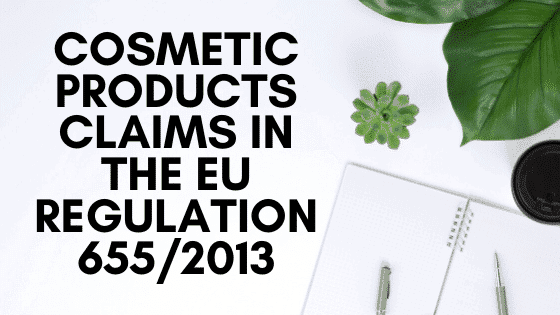
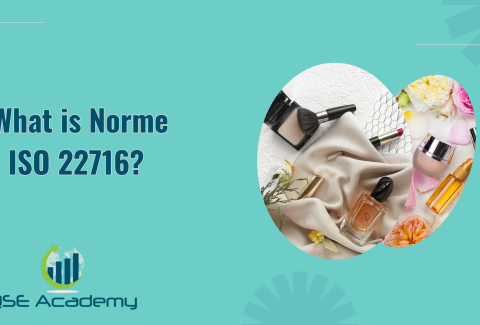
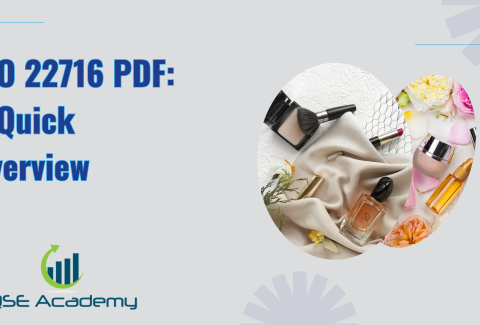












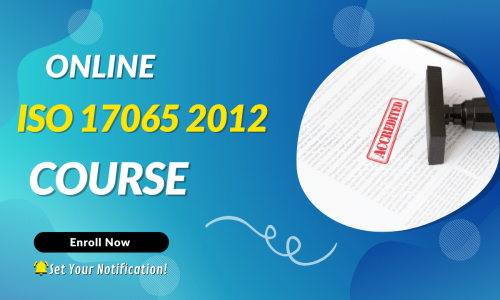
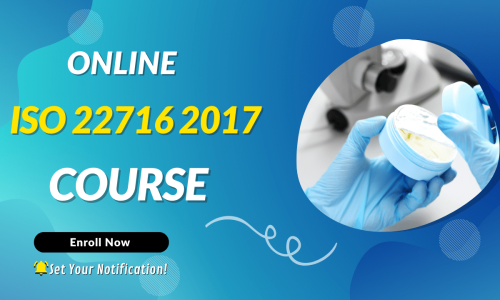




Comment (1)
Melva C
Perhaps you can tell us more about the evidential support? What is the EU cosmetics directive?